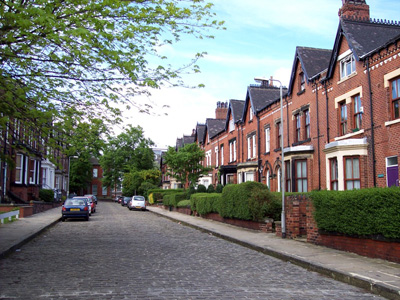Restoring a Period Property
Maintaining Authenticity, Building Code Requirements, and Historic Compliancy can be Tricky but Rewarding
© 2012 by Wayne Barker; All rights reserved; content may not be copied, rewritten, or republished without author’s written permission.


Having the opportunity to buy a period property and home might seem like a dream come true, but there are a number of responsibilities associated with owning a period home.
If you want to ensure that your home retains its value, and is as authentic as possible, then you will need to do a lot of research before you restore it.
Depending on where you are considering purchasing and restoring, you might have a number of agencies to answer to about what you can and cannot do. Many properties may be listed as historic properties and even such things as bringing the home current on electrical code may be denied.
Know Your History
Make sure that you have a good understanding of the era that your home was built in. If, for example, you buy a Victorian home, make sure that you know exactly when the Victorian era began and ended.
Most people are aware that the end of the Victorian period was 1901, when Queen Victoria died, but they often forget that the era did not span the entire 19th century.
The Victorian era started in 1837. Within the Victorian period there are several different architectural styles. If you want your refurbishment to be as authentic as possible, make sure you understand the trademark elements of each style.
there are several different architectural styles. If you want your refurbishment to be as authentic as possible, make sure you understand the trademark elements of each style.
Use Reclaimed Materials Whenever Possible
While many companies manufacture period “style” internal oak doors, sash windows, roof tiles, and fireplaces, they are not always the real thing.
This might not matter if you’re simply trying to infuse your modern home with a classical feel, but it does matter for period restorations. Your home will better retain its value (or improve in value, if you’re restoring a distressed property), if you use authentic materials.
It should be fairly easy to find genuine Victorian doors and sliding sash windows. Before you invest in any specific pieces, check that the style is right for the era.
For example, between 1837 and 1870, tall panes of glass were in fashion. Between 1870 and 1890, glazing bars saw a resurgence in popularity, thanks to the Queen Anne Revival.
Victorian-Era Doors must be Authentic
For your front door, you should look for a four-panel door that has two small glazed panels at the top. If your home was built during the later part of the Victorian era, then those top panels may have stained or etched glass in them.
Avoid “modern” Victorian doors, as these are usually designed based on a mix of popular elements from several eras, and while they may look nice, they stray a long way from true Victorian design.
Bathroom Fixtures and Fittings
Keeping a bathroom authentic can be especially difficult and it may prove difficult to both maintain authenticity and comply with the building code. A true Victorian bathroom would not fulfill the sanitary needs of a modern home.
The closest you can reasonably achieve is a “Victorian Style” bathroom, with Edwardian fixtures and fittings. Is this a reasonable solution for your vision? It’s certainly something to consider.
If you to go for a Victorian bathroom, pay careful attention to couplings. Coupling a WC (water closet) pan with a cistern can be incredibly difficult; especially if you’re trying to match an antique WC pan with a modern cistern.
In general, you should avoid mixing and matching wherever possible, and try to buy both pieces from the same source at the same time.
Finding taps, or faucets, that will fit sinks and bath tubs isn’t too bad, but it’s still a good idea to take photographs and confirm fittings before you spend any money.
Wayne Barker works and writes for UK Oak Doors specialists in high quality internal oak doors and Victorian doors.